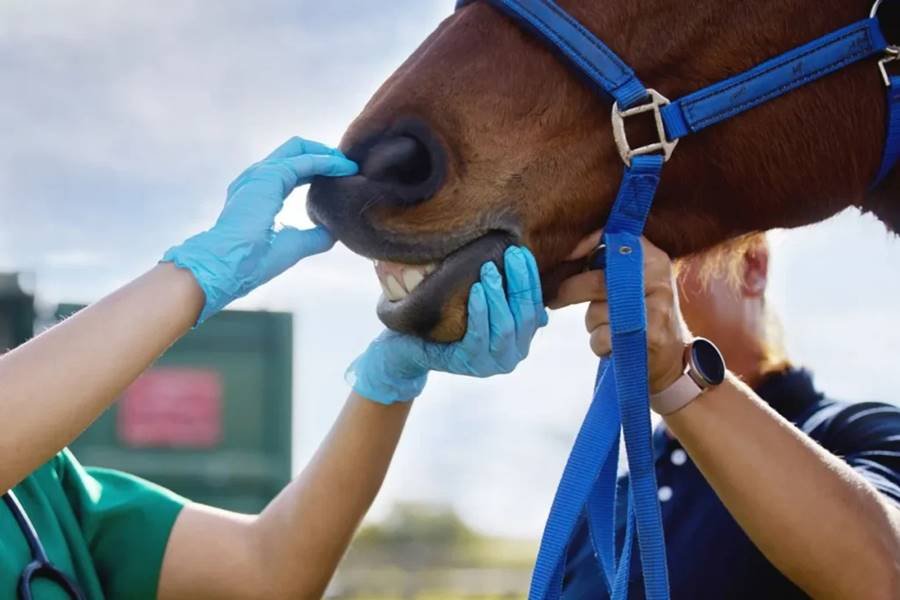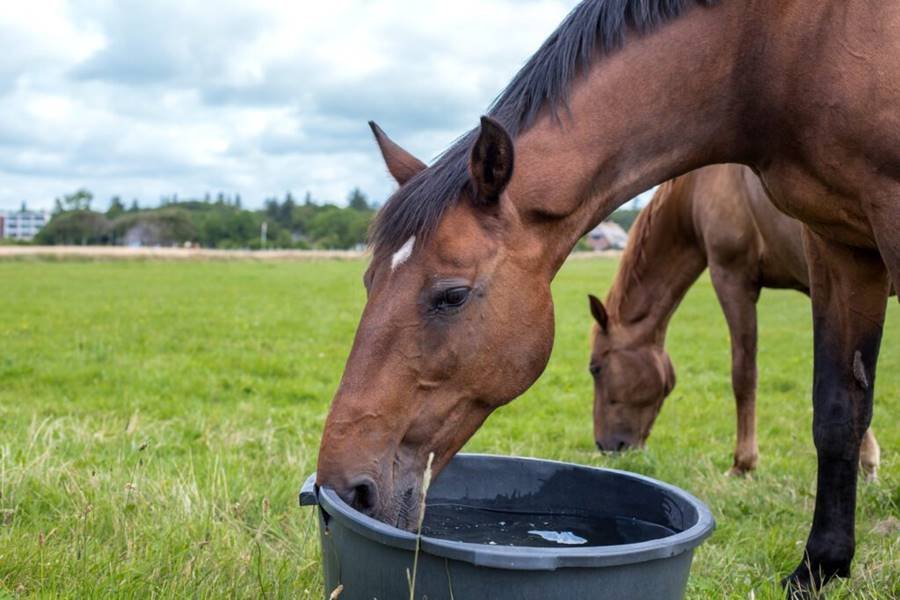Horses are strong and beautiful animals, but like all animals, they can sometimes have health problems.
One of these issues is called a “locked stifle joint.” This might sound complicated, but don’t worry! In this guide, we’ll explain what it means, why it happens, how to spot it, and what you can do to help your horse.
What is the Stifle Joint?
To understand a locked stifle, we first need to know what the stifle joint is.
The stifle is a big joint in a horse’s back leg. It’s kind of like our knee. Just like our knees help us bend and walk, a horse’s stifle helps it move its back legs properly.
There’s a part of the stifle called the patella, which is like the kneecap. When a horse is standing and relaxing, the patella locks into place to help the horse rest without using a lot of muscle. This is normal and helps the horse stand for a long time without getting tired.
But sometimes, this locking system doesn’t work the right way. When this happens, the joint gets stuck, and the horse can’t bend its leg normally. That’s what we call a locked stifle or upward fixation of the patella.
What is a Locked Stifle Joint?
A locked stifle happens when the patella (kneecap) gets stuck in the locked position and doesn’t unlock when the horse wants to move. This makes it very hard for the horse to move its back leg.
It might look like the horse is dragging its leg, limping, or even tripping. Sometimes the leg will suddenly snap free with a jerk, and other times it stays stuck until someone helps it.
What Causes a Locked Stifle?
There are a few reasons why a horse might have this problem:
- Young Horses – Young horses, especially ones that are growing fast, can get locked stifles more often. Their muscles may not be strong enough to keep the joint moving properly.
- Lack of Exercise – Horses that don’t get enough movement or exercise might have weaker muscles around the stifle, which can cause locking.
- Poor Muscle Tone – Weak or unbalanced muscles in the hindquarters (back legs and hips) make it harder for the horse to control the stifle joint.
- Straight Hind Legs – Horses that are born with very straight hind legs may be more likely to develop stifle issues.
- Injury or Trauma – If a horse gets injured or slips, it might cause the joint to work poorly afterward.
What Does a Locked Stifle Look Like?
If your horse has a locked stifle, you might notice these signs:
- The back leg stays stuck in a straight position.
- The horse drags its toe on the ground.
- The leg may suddenly jerk back into place.
- The horse stumbles or seems uncoordinated.
- It happens more when the horse is first moving after resting.
In some cases, it might only happen once in a while. In other horses, it can happen often or even every day.
How is it Diagnosed?
If you think your horse has a locked stifle, it’s a good idea to call your vet. The vet will watch your horse walk and might gently move the leg to see how the joint is working.
Sometimes, they will do flexion tests or use tools like X-rays or ultrasound to make sure nothing else is wrong.
Treatment Options
There are several ways to help a horse with a locked stifle, depending on how bad it is.
1. Exercise and Strengthening
The best and easiest treatment is strengthening the muscles around the stifle joint. This often includes:
- Hill work (walking up and down slopes)
- Pole work (walking over ground poles)
- Trotting and controlled riding
This helps build up the quadriceps muscles, which support the stifle.
2. Shoeing Changes
A farrier might change how the horse’s hooves are trimmed or shod to help the leg move better.
3. Injections
In some cases, the vet might use medicine to help reduce pain or inflammation in the joint.
4. Surgery
In serious cases that don’t improve with exercise or other treatments, a simple surgery called a medial patellar ligament desmotomy might be done. This surgery cuts a small part of the ligament so the joint doesn’t lock anymore. It usually has good results, but it’s only done if really needed.
Can a Horse Recover?
Yes! Many horses with locked stifles get better with the right care and exercise. Young horses often grow out of it as their muscles get stronger. Horses that stay active and healthy usually have fewer problems.
Tips for Preventing Locked Stifle Joints
Keep your horse active. Regular movement helps strengthen the joints.
Use a good feeding program. Proper nutrition supports muscle and joint health.
Watch for early signs. If you notice anything strange about how your horse moves, check with your vet early.
Condition your horse properly. Don’t push too hard too fast. Let young horses build strength slowly.
A locked stifle joint in a horse might seem scary at first, but it’s a common condition—especially in younger horses. The good news is that with the right care, exercise, and sometimes a little help from a vet, most horses recover well and go on to live happy, active lives.
By learning the signs and knowing how to help, you can make sure your horse stays healthy and comfortable!




